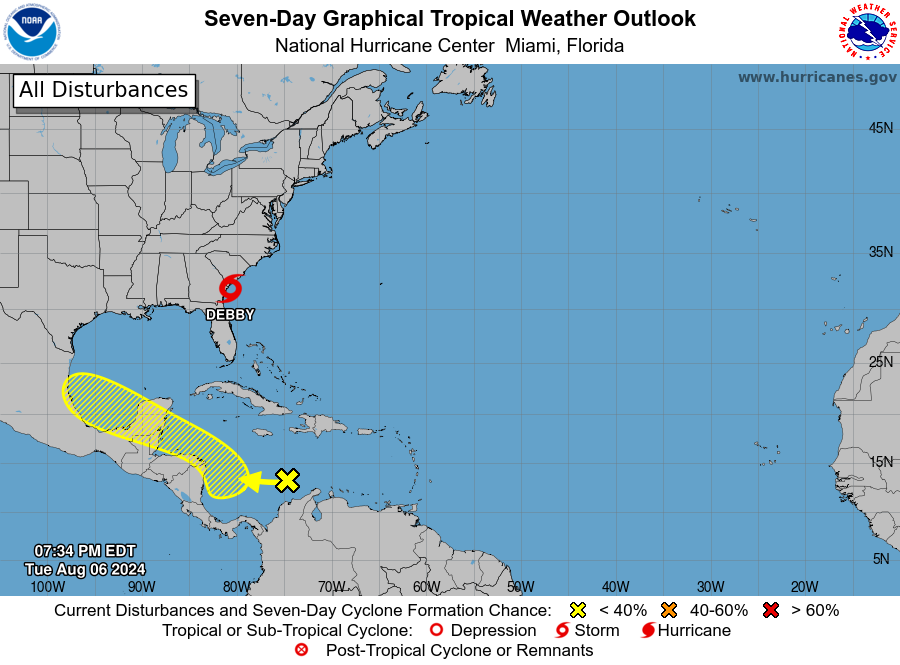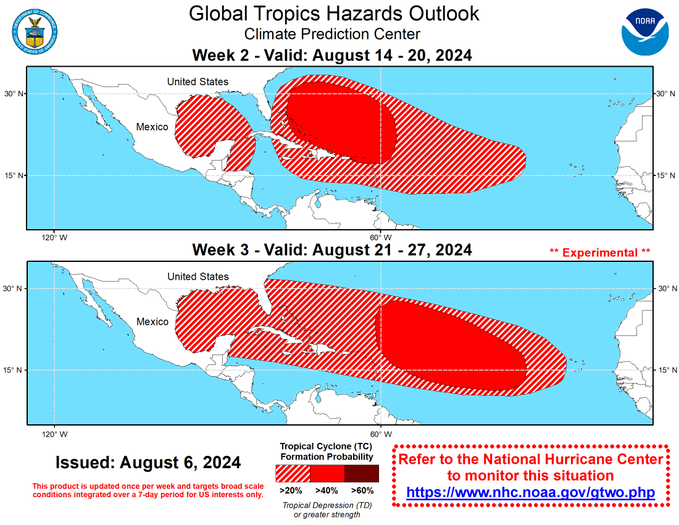As I write this, the remains of Hurricane Debby have moved off the coast of Georgia and will be spinning there for over a day before the center drifts back onshore and then gets caught up in steering currents and quickly moves up the East Coast, where it is already raining and causing havoc there. While Debby has caused a lot of havoc with over a foot of rain in some locations that caused damage to roads, bridges, crops, and buildings, the damage was not as bad as it could have been and was less than Hurricane Idalia last year, which made landfall as a much stronger storm. The focus of rain has now shifted to northern South Carolina and North Carolina. As Debby moves along, it seems to be following the forecast from the National Hurricane Center surprisingly well, which is even more amazing considering how varied the individual model forecasts were. So if you live in the Carolinas or Virginia, follow the NHC forecasts and you should know what to expect.
I want to spend a few minutes talking about what happens next in the tropics. We are just about to enter the heart of the Atlantic tropical season so we can expect to see a lot more storms popping up in the next few weeks. In fact, the NHC has another center in the Atlantic now, but it only has a 20% chance of developing and it is far to the south so is not likely to affect us in the Southeast. But a new product from Colorado State was just introduced today giving 2-week outlooks for tropical activity that could be really useful for planning ahead for fieldwork and other activities. You can read their initial outlook at https://tropical.colostate.edu/Forecast/2024-0806.pdf. For us in the Southeast, there is not much activity showing up other than what we have from Debby right now, but in future forecasts it could provide a timely warning of storms that might move towards us. The maps below show a better than 40% chance of storm development in the Atlantic in both weeks 2 and 3. Their PDF outlook provides some maps of where the global models currently are predicting they will go. Of course you always have to be wary of forecasts more than a week ahead, but the forecasts are getting better so they might provide enough useful information to make plans about when to apply chemicals, when to harvest, etc.

